When the winter cold was over and everything around was green, I want to enjoy fresh, juicy berries from my garden. It is thanks to the early ripening dates that strawberry Kimberly received wide recognition among summer residents and gardeners of the Middle Strip.
Material Content:
Characterization and description of the variety
Kimberly's mid-early strawberry was bred at one of the breeding institutes in Holland by crossing two other varieties Gorella and Chandler. Spreading bushes are formed by powerful shoots covered with small glossy green leaves. Red mustaches are characterized by slow growth rates and reach an average length. Inflorescences are formed on strong peduncles that do not allow branches to sink to the ground under the weight of ripening fruits. Fragrant, sweet berries have the right shape in the form of a cone and are painted in red-orange color. Taste is rated as high.
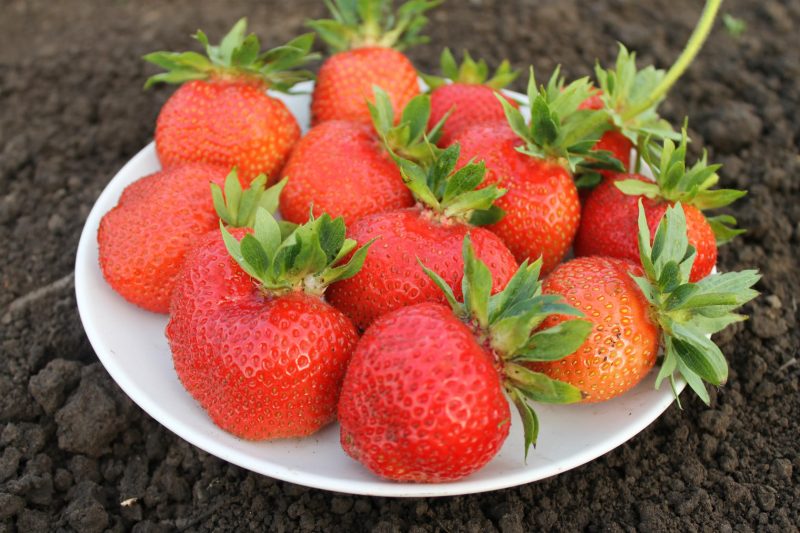
The average weight of the fetus varies from 18 to 22 g, with a declared weight of up to 50 g, which can be obtained only if all agricultural requirements are met. From 1 ha during fruiting period it is possible to collect an average of 120 c. The variety is frost-resistant, also has good immunity to lesions by diseases and pests specialized for strawberries.
Advantages and Disadvantages of Kimberly Strawberry
Kimberly strawberry variety, like others, has its advantages and disadvantages.
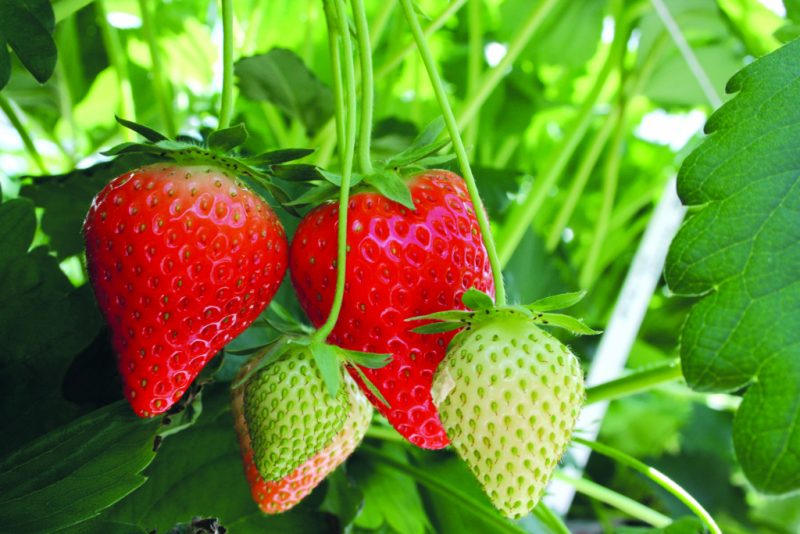
Among the advantages are:
- early ripening;
- high productivity;
- the structure of the bush, not allowing the fruits to lie on the ground;
- lack of voids in the fruit;
- good density due to which the berries can be transported;
- resistance to frost and pests.
The cons include:
- poor tolerance of dry periods without additional irrigation;
- short fruiting phase - up to 20 days.
How and when to plant in open ground
Strawberries are planted in spring or when autumn arrives at the prepared site.

The beds should be located in sunny or slightly shaded areas where the soil meets such requirements as lightness, friability, drainage and high fertility. If the soil is quite poor, then 2 weeks before planting on the beds, peat, compost and a small amount of complex mineral fertilizers should be applied.
During direct planting, holes with a size corresponding to the parameters of the seedling root system are dug out according to the 60x60 cm pattern. Bushes are lowered into the recesses and sprinkled with soil, which is slightly compacted, and then watered abundantly.
Agrotechnics of cultivation and care
In order for the harvest to be rich, Kimberly strawberries should be cultivated, taking into account all agricultural requirements.
Watering

A moisture-loving variety needs a lot of moisture, especially after planting. Seedlings are recommended to be watered daily until it is successfully rooted. As a rule, seven days will be enough. Subsequently, irrigation is carried out in such a way that the earth remains constantly moistened slightly without stagnation of water in the roots, which can lead to the development of gray rot.
The best way to water is drip irrigation.
Fertilizing and fertilizers

During the growing season, strawberries are fed 4 times:
- After the snow cover has melted, garden strawberries are fed with organic fertilizers containing a high concentration of nitrogen, which stimulates the growth of green mass. Urea granules can be scattered on still wet ground.
- In the phase of flowering and the formation of berries under the bushes, mineral fertilizers are introduced, which include phosphorus and potassium.
- The beds are fertilized with phosphorus-potassium agrochemicals at the beginning of autumn, which allows the plants to go into the winter in good condition.
Soil treatment
To obtain a quality crop, beds should be loosened periodically, enriching the soil with oxygen. During cultivation, weed vegetation is simultaneously removed, which selects the nutrients necessary for the full development of cultivated plants. To prevent the rapid evaporation of moisture, it is recommended to mulch the beds with straw or sawdust.
Transfer
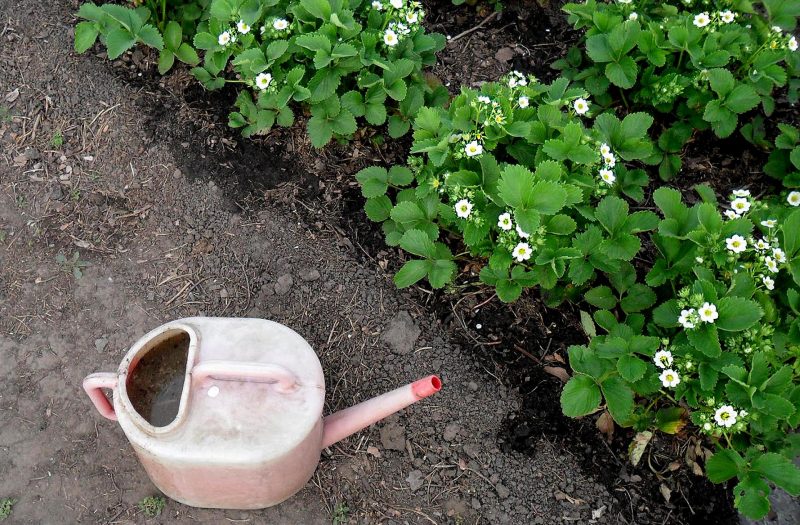
For large fruits, crop rotation cannot be neglected. So that the strawberry does not degenerate and does not grow smaller, it is required to change the place of cultivation of strawberries every 3-4 years.
Pruning
After the fruiting phase, all leaves are cut from the shoots, which stimulates the rapid growth of new sprouts. If the gardener is aiming for a harvest, then the mustache, which drains the forces from the bushes, is also removed during the growing season.
Preparing strawberries for the winter

The variety is frost-resistant, therefore it does not need shelter in warm regions. However, if the climatic conditions of the region are characterized by severe and snowy winters, it is recommended that the bushes from which all the old foliage had been previously removed be covered with fir spruce branches. After the snow falls on the protective material, an excellent snow cap will form.
Protection against diseases and pests
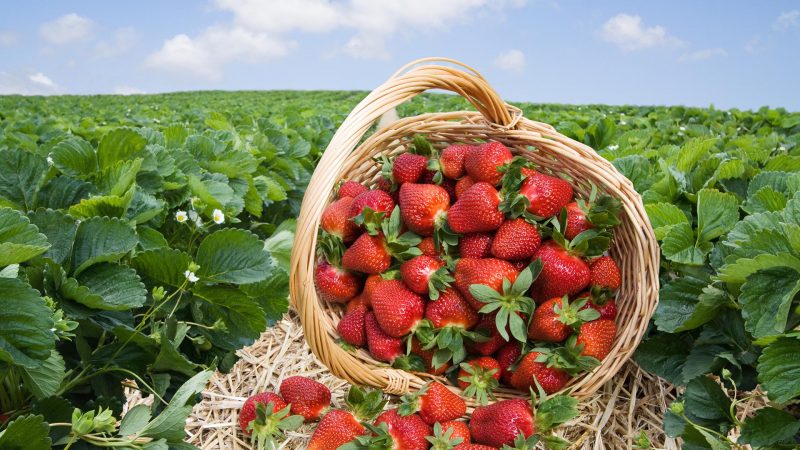
Strawberry Vima Kimberly is resistant to damage by fungal diseases, with the exception of gray rot, the development of which is associated with waterlogging and stagnation of water in the roots. To cure diseased plants, it is recommended to treat the beds with fungicide, normalizing the irrigation regime and enriching the beds with oxygen. But such pests as aphids, flares, wireworms and weevils are often observed on landings.As protection, it is recommended to use insecticidal preparations of an appropriate spectrum of action.
Breeding methods
Kimberly variety is bred by vegetative methods.
Mustache

With this method, two strong plants that do not bear fruit are selected. Grooves are made next to the selected specimens. The mustache is dug into the prepared grooves. When rosettes are formed, the latter are separated from the mother instance and transplanted to another site.
Dividing the bush
Another popular trick in which:
- A powerful plant is extracted.
- A sterile and sharp instrument is prepared.
- Rhizome is cleared of soil residues.
- The bush is divided into parts so that each has a horn and a socket.
- Delenki land in their designated place.
Tips for increasing yields
There are several activities that can help you get a higher yield.
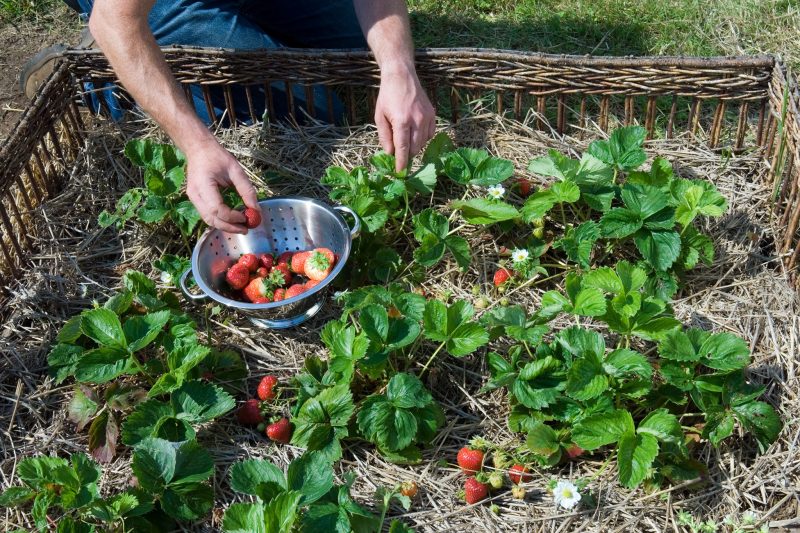
- In bushes not intended for propagation, the mustache should be cut so that they do not take away the strength of the plant.
- It is necessary to organize a systematic feeding with the inclusion in the nutrient complex of phosphorus and potassium, which are responsible for the formation and growth of the fruit.
- It is required to monitor the cleanliness and breathability of the soil on the beds.
- Timely watering should be provided, especially during the formation and ripening of berries.
- We must not forget about integrated plant protection, which can increase the yield of a variety by 10-15%.
- When growing strawberries in regions of risky farming, it is worth protecting the bushes from freezing, which may cost the entire future crop.
So, if you fulfill all the requirements and pay due attention to the plantings, then the harvest from sweet and juicy fruits will be of high quality and high.












